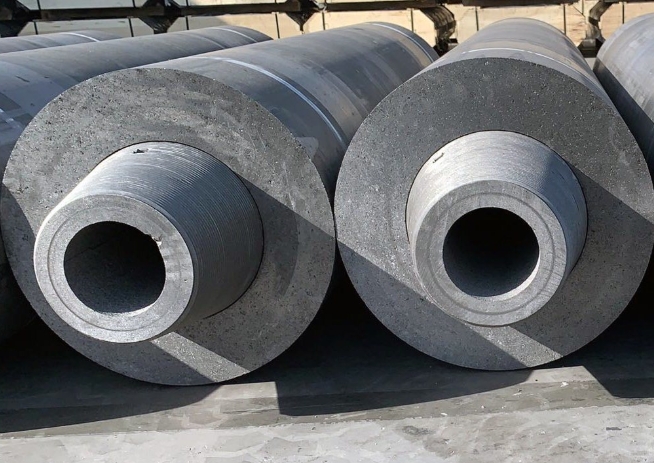
Graphite Electrode Energy saving is an important part of the design of battery based systems. Graphite, the dominant negative electrode in lithium-ion battery (LIBs), is used in portable electronic devices, in electric vehicles and in other applications requiring high energy density. LIBs are therefore the primary driver for global graphite demand.
The energy saving potential of graphite for LIBs is still not fully explored. Recent advances in the understanding of the relationship between structure, microstructure, surface chemistry/composition, and function have led to novel strategies that may lead to more efficient and lower-cost negative electrodes.
One of these methods is to modify the surface of graphite in order to improve its performance. To achieve this objective, various techniques can applied with the goal of achieving a thin SEI layer. These methods include mild oxides and the application Al2O3 coatings (figure 7). Mild oxidation smoothes the surface of the graphite particles, reducing the interaction between the electrodes and electrolytes. This allows the formation of less electrically insulating (or conductive) surfaces, leading to improved cell performance.

Coatings can also be used to improve the stability of graphite anode electrodes, allowing them to operate under higher current densities for longer durations. Coatings can also prevent voids that are detrimental to electrode performance.
Graphite electrodes are usually made from natural graphite that is extracted and refined in mining operations. The raw product is then transformed into the final graphite through a series or chemical treatments. This process is a significant contributor to the carbon foot print of the graphite sector, as mining and processing consumes significant amounts water, energy and chemicals.
A new strategy can be used to reduce these environmental impacts by directly recycling waste graphite. This can happen by removing any active material from the waste graphite. Then, it is converted back into its prelithiated form. This can be done using water, which is both cost-effective and readily available. This method can reduce energy consumption by a significant amount while retaining the capacity of the original anode.
The graphite market is both sustainable and profitable. Since the majority of graphite consumed in the U.S. goes to end-uses like steelmaking, it's important to consider how energy savings and recovering waste graphite will impact the carbon footprint of this industry.
The sustainability of the graphite sector is ultimately dependent on the ability of the negative anode to retain its capacity in a wide range operating conditions. To achieve this, the researchers performed cyclic Voltammetry experiments on recycled anode electrodes created by different pressing conditions. The results show that recycled electrodes are stable at low loads. Cycling up to 7681N/cm2 shows minimal capacity loss. These results suggest direct recycling of spent carbon is an attractive solution for the problem of capacity losses in LIBs.

Write a Message